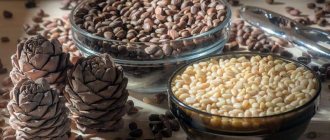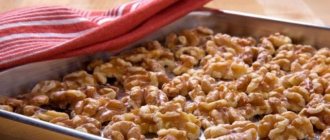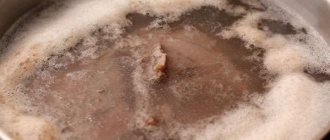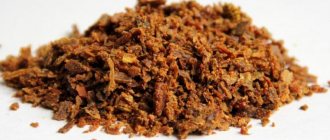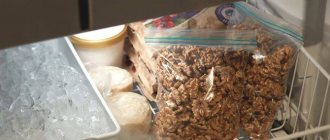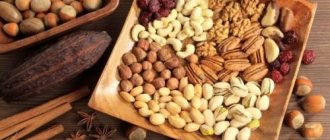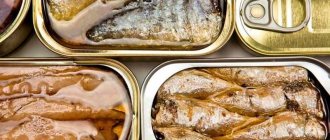A source of microelements, vitamins, and unsaturated fats is a walnut. Just two pieces per day replenish the body’s need for Omega-3 acid, which preserves attention and memory, and phytosterols reduce cholesterol and resist cancer. Walnuts are good for everyone except children under 3 years of age.
September-October is the height of the nut season. The markets have a large selection of nuts in and without shells. The fruits are harvested for future use by owners who have their own garden. It doesn't matter how you became the happy owner of the crop. It is more important to understand how to store shelled and shelled walnuts at home. Which method to choose to minimize product losses during winter storage.
Selection of walnuts for storage
Only fruits of the highest and first grades retain their nutritional properties throughout the year. You can choose high-quality walnuts based on the following criteria:
- the shells are thin, tightly adjacent to each other;
- the ribs on the surface are weakly expressed, slightly rough;
- the kernels are freely separated into halves and quarters and do not crumble;
- The nut is heavy and does not ring when shaken;
- subtle specific smell.
The shelled kernels should be strong, light gray to light brown in color. Blackness or wrinkling of the shell means that the product is spoiled or storage conditions have been violated.
Storing walnuts in a jar or box
Remember the characteristics of walnuts, which should be checked when purchasing.
Fine:
- the amniotic rind is absent;
- smooth, symmetrical shape;
- round fruit size from 2.5 cm and above;
- nuts drown in water.
Badly:
- bright yellow color of the shell or kernel;
- the shell is cracked with your fingers;
- the kernel shriveled and shriveled;
- there are signs of pest infestation.
When a nut is less than 2 cm in diameter and irregular in shape, it is a substandard product. If you pull the halves in different directions and a gap appears between them, the harvest was harvested too early or from diseased trees. They will not be stored due to free access of oxygen to the nucleolus.
If the nuts do not smell anything, they are not ripe. If the smell is rancid with a hint of mold, it is rotten or has expired. Green nuts do not have the ability to ripen like kiwi at home and spoil within a week.
How to prepare nuts for harvesting
If nuts were collected in wet weather, they must be dried in well-ventilated areas. Then remove the shells from the fruits and place them in the oven for 60 minutes to bake. In this way it is easy to protect the crop from moths and other pests.
See also
Planting and caring for common hazel in the Moscow region, the best varieties and cultivationRead
Shelf life
Shelf life depends on treatment before storage, conditions, packaging in which the product is stored. The lifespan of packaged nuts is determined by the manufacturer, but not more than 2 years. And if the product came into the house from the market or was assembled with your own hands, the storage duration is as follows:
- shelf life of walnuts in shell is 2 years;
- peeled kernels – 6 months.
Unpeeled ones last longer, but take up more space. It is much more convenient to keep the walnut kernels peeled. Reducing the temperature to +5° and freezing will help increase the shelf life. These recommendations are also suitable for storing peeled potatoes.
Do I need to wash walnuts?
In any case, whether the fruits are peeled or not, walnuts must be washed. After all, there is no certainty how they were collected, cleaned and where they were then stored. The shell must be washed to remove traces of pericarp and dirt, which is abundant due to harvesting during the rainy season. If the product is washed at production, it is packaged in packaging indicating that the nuts are washed. But the price is set several times higher.
- Nuts in shell. After washing, unshelled walnuts are dried for 1-2 weeks. They are laid out in one row on a fabric backing and mixed periodically. Drying is more effective outdoors: under a canopy, on a balcony, if weather conditions permit. The fruits are scattered on a net raised above the ground. Drying occurs through continuous air circulation. It is important to protect the batch from birds. Especially crows fly in flocks and steal nuts from their owners.
- Shelled walnuts. The washed kernels are dried in a frying pan without oil at minimum temperature. To do this, they are poured into a bowl and, with continuous stirring, heated for 15-20 minutes until the moisture has completely evaporated. Do not overcook or fry.
The shelf life of walnuts is affected not by the fact of washing, but by improper drying. Wet ones quickly sour and mold.
Basic principles of storage
To successfully store walnuts and pine nuts, a number of conditions must be met:
- quality of the original product – premium and 1st grade;
- room temperature +5…+15°;
- humidity 40-60%;
- regular ventilation;
- breathable packaging;
- inaccessibility to rodents, birds, insects.
In an apartment, it is recommended to store walnuts in shell in a dark, ventilated place at a temperature of +22...+25°, humidity up to 60%. Unpeeled fruits are stored at room temperature for about 1 year, shelled ones - no longer than 2 weeks. To increase shelf life, it is recommended to place peeled walnuts in the freezer.
Do nuts lose nutrients over time?
Walnut is a valuable product with a unique composition of minerals and vitamins, a specific set of aromatic and tannin substances. A high proportion of 18 to 21% is protein. Depending on the variety, from 45 to 77% is a fatty nut oil, which contains a unique set of saturated and unsaturated acids. The chemical composition changes slightly over time and largely depends on how the walnuts are stored.
A nut is a fruit seed that performs a storage function. Even with a very long period of dormancy, the core retains a full range of substances that may be required for the development of a new plant.
A microclimate is created under the shell that can protect the kernel from external influences for a long time. It is not difficult to understand how to store walnuts in shell at home. It is necessary to maintain a balance of temperature and humidity, limited illumination.
If the nut is peeled and not protected by a strong bone shell, then the influence of external factors increases. Therefore, conditions are created under which all chemical processes slow down, which involve:
- restriction of air access;
- lower temperature.
If the conditions are strictly observed, the product can be stored for up to a year with virtually no loss of quality.
Tara
For long-term storage, you need to choose the right container. It must be durable and well ventilated. For dried fruits in shell, it is recommended to use:
- polymer nets for vegetables;
- cellular plastic fruit boxes;
- corrugated cardboard boxes;
- fabric bags.
Storing walnuts in a bag or basket.
Peeled walnuts are stored in airtight containers with lids and in vacuum jars. Thick plastic bags are only suitable for storage in the freezer. To increase shelf life, you can use a household vacuum sealer. In an airless space, oxidation processes stop, which increases the storage time by 2 times.
How to properly store walnuts at home
Nuts are rich in fat. Under the influence of heat, they split, giving the products a rancid smell and taste. It is important to know the conditions and rules for storing walnuts at home to prevent this from happening.
For long-term storage, it is not recommended to purchase peeled ones. It is better to buy it in shell and remove it yourself. Then there will be exact confidence in the quality of the kernels, their dryness and compliance with storage conditions.
What should I do if the kernels start to deteriorate? Is it possible to store the nuts in the freezer? If rot or mold or any suspicious plaque appears, there is no point in resuscitating the nuts, much less using them for food. Freezing, boiling, calcining is useless. This way, only the appearance is saved, but aflatoxins have already formed in the fruits, which are not excreted from the body, cause allergies and damage the liver.
In a shell
Nuts need to be provided with the correct microclimate in order to preserve them for up to 2 years. The optimal solution to the question of how to store walnuts in shell is to maintain the temperature at +5...+15° and humidity not higher than 60%. The conditions are no less strict than, for example, when storing salted lard. If it is not possible to create such parameters, the fruits are kept at room temperature for no longer than 1 year.
Step-by-step storage instructions:
- Sort the fruits, sort out the cracked ones;
- rinse thoroughly and dry;
- arrange in nets, boxes with holes;
- place in the pantry, on the balcony, protected from light;
- ventilate the room once a week;
- review inventory status once a month.
Peeled halves and chopped walnuts
A product without a natural casing quickly deteriorates. Store peeled walnuts in the refrigerator in sealed containers made of plastic, glass or tin for no longer than 6 months. At room temperature, the fruits can be stored for no more than 2 weeks.
Do you wash nuts before drying?
Not really
To extend shelf life, peeled nuts can be frozen. To do this, they are packaged in convenient portions in bags or food containers. They will keep in the freezer for up to 1 year. This method can also be used to preserve pomegranate seeds.
When vacuum-packed chopped nut kernels and halves, the life expectancy is doubled. You can buy a vacuum cleaner in any online store, in the small household appliances section.
It is unacceptable to keep peeled kernels in a fabric container at room conditions for a long time. Moths form on them, which will spoil not only nuts and cereals, but also woolen items in the closet. It is extremely difficult to get rid of the parasite later.
Product selection
In stores and markets, walnuts are sold in shells, uncrushed without shells, crushed without shells, with additional ingredients (chocolate, glaze, syrup, etc.).
First, evaluate their appearance . A quality product will look clean and fresh, whether in or out of shell. Then smell it: if the kernels give off an unpleasant, rancid or moldy smell, then it is better to refuse the purchase.
Interesting fact . Round walnuts have thicker shells than oval ones.
We list the main features of a high-quality inshell nut :
- the surface is clean, without stains, plaque, or remnants of green shell;
- the nuts are dry, because moisture is the main cause of mold and rot;
- there is no damage or holes on the surface - the opposite indicates pest damage;
- when tapping, a clear and loud knock is heard;
- the shell has a uniform light brown color.
Signs of quality kernels:
- uniform light color without stains or plaque;
- absence of an oily film - its presence indicates a violation of storage conditions or staleness of the product;
- minimum number of crushed kernels - crushed nuts quickly deteriorate and acquire a bitter taste;
- pleasant nutty aroma, without any foreign odors.
If you choose a packaged product, carefully study the information on the packaging . The first thing people pay attention to is the expiration date. Old nuts lose their nutritional value and begin to taste bitter.
Attention! It is better to avoid purchasing peeled kernels in completely transparent packaging. When exposed to light, they acquire a bitter taste.
The second point is the packaging itself . It must be whole, unopened. If there is a lot of debris inside, there is condensation, and plaque is visible on the kernels, then you should not buy such a mixture.
When choosing between buying kernels in shell and without, give preference to the first option . It is easy to determine the quality of the kernels by the shell; in addition, the shell protects the nut, reducing the likelihood of spoilage.
The shelf life of nuts in shell is 1 year, and peeled kernels are only 3-4 weeks . After this time, the oils in the kernels begin to oxidize and the nuts acquire a bitter taste.
At home, you can peel the nuts from the shell yourself using special devices and then store clean kernels, taking them out as needed.
Interesting things on the site:
Storing dates at home - what methods exist?
Rules for storing prunes: packaging, place, temperature
Storing feijoa fruits at home
